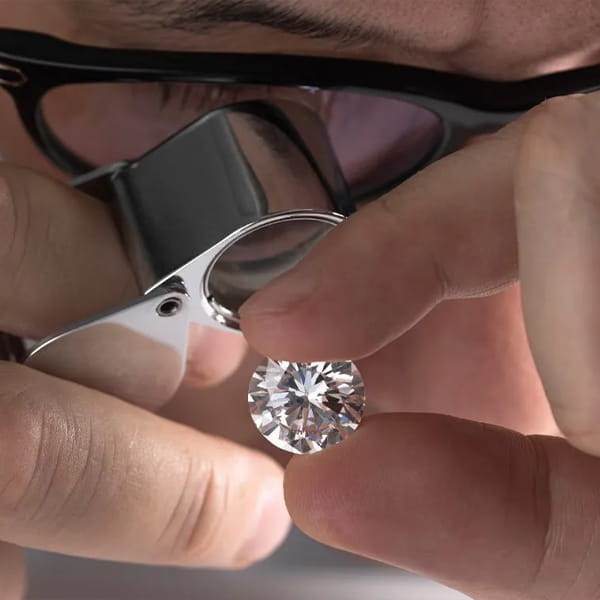The jewellery market has already been shaken up significantly in recent years thanks to the rise of man-made diamonds. And yet even this bold niche is not immune from disruption by new technologies, as evidenced by the arrival of sky mining as a fresh concept.
So what is this exactly, and how might it influence the production of lab-grown gems, as well as their availability and popularity on the modern market? Let’s dive in.
Exploring the Intrigue: The Basics of Sky Mining
Sky mining might sound like something straight out of a science fiction novel, but it’s sincerely gaining momentum in real-world applications. And in fact there are a couple of key definitions to get your head around, each with different levels of viability.
First up, there’s the process of sky mining which essentially involves capturing carbon from the Earth’s atmosphere and using it as the material from which diamonds are grown in lab conditions.
The idea is to go above and beyond what’s already being done with man-made gems, aiming not just for net zero emissions, but for an approach to manufacturing which actually reduces the amount of carbon in the atmosphere.
Given that the climate crisis is really hitting home for millions of people worldwide right now, it’s apparent that such steps are more than welcome. So when consumers are looking for flawless lab grown diamond rings for women’s engagements, the promise of sky mined gems being on offer will make these even more alluring.
Next, there’s the more theoretical form of sky mining, which will eventually involve extracting precious resources from celestial bodies other than our planet, such as asteroids. This is quite a different endeavour from the carbon capture-based sky mining, and for the rest of this article we will primarily be focusing on the former, since it’s already being implemented, rather than existing as something of a forward-thinking pipe dream.
From Sky to Sparkle: Transforming Atmospheric Carbon into Lab-Grown Diamonds
With the revolutionary potential of sky mining explained, it’s worth going on to talk about how the fruits of this process can be applied to the lab-grown diamond market segment.
As with existing man-made gem production, two primary methods are utilized to turn the carbon seed that forms the basis of lab-grown diamonds into fully fledged jewels:
- High Temperature High Pressure (HTHP): Here, immense heat and pressure are used on captured carbon in a controlled environment, mimicking Earth’s processes and thus forming diamonds which are entirely identical to those mined using old-school methods.
- Chemical Vapor Deposition (CVD): This involves breaking down gas molecules including those derived through atmospheric capture of carbon, subsequently causing pure diamond layer deposition over the seed that acts as the starting point.
These highly technological procedures bridge the gap between pie in the sky dreams and tangible realities. And of course introducing carbon capture into the equation is the killer move here.


Unearthing the Appeal: Why Consumers Could Flock to Sky Mined Lab-Grown Diamonds
In a world continually pressing towards innovation, it’s no surprise that even diamond creation has moved beyond conventional practices, as we’ve established. And of course sky mining proves to be a captivating method on multiple fronts.
Novelty
Firstly, lab-grown diamonds which involve an element of sky mining in their production are simply more interesting than your standard gem. This is a novelty factor that could help cutting edge diamonds to appeal to new demographics that might previously have had minimal interest in jewellery. Tech-heads and gadget lovers will appreciate being able to spill the beans about their latest piece if it’s made with carbon that has been pulled down to Earth from the heavens above.
Environmentalism
Secondly, for those considering the future impact of our current actions and aspiring to make progressive consumer choices, sky mining is a major selling point when it comes to jewellery. Most diamond buying is now done by the under-40s, which is a demographic that’s more attuned to the climate crisis than ever, so if they can make purchases without the guilt, they’ll jump at the chance to do so.
Uniqueness
Lastly, the stand-out nature of lab-grown diamonds and the prospect of sky mining plays a substantial role in setting their appeal in stone. You want to stand out from the crowd? Snap up a sky-mined diamond. It’s marketing material that really writes itself.
Dealing with Disruption: How Established Brands Can Adapt
The fear in all of this is that sky mining will make jewellers and producers that rely on established methods less able to compete if the market pivots away from their wares.
However, this is not as much of an issue as it might seem, because the carbon capture iteration of sky mining is still a comparatively minute niche of this much larger market. Moreover if the firms behind man-made gems want to migrate over to using this as the source of their materials, then it is a very simple step to take.
Likewise, we’re still a long way from living in a world where the second definition of sky mining is a mundane reality of the industry. Launching rockets into the deepest recesses of the solar system or beyond to capture and extract value from asteroids is monumentally expensive and also doesn’t really fit in with the aforementioned values of modern consumers.
Of course there are past instances in which asteroids packed with diamonds have come to us, crashing onto the planet’s surface and depositing their valuable cargo without us needing to lift a finger. But the chances of this happening again are slim, and we’re better off doing what we can to use lab-created diamonds to push the industry forward, rather than crossing our fingers and hoping for a miracle.
Final Thoughts
In the short term, carbon capture-oriented sky mining is the most interesting and potentially impactful concept from a lab-grown diamond perspective.
Further down the line, interstellar sky mining might happen, but other scientific breakthroughs in the interim could render it redundant before it even begins.
So for jewellers and consumers, attention should really be paid to the man-made gems and technologies that are on the market already.



